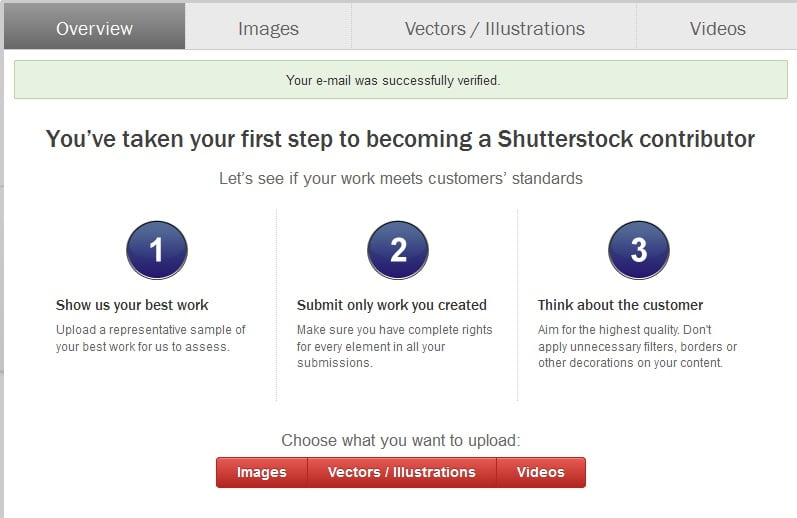In recent years, the introduction of AI-generated photography has revolutionized the stock image market. Platforms like Shutterstock have become a battleground for digital creators and artificial intelligence, sparking a debate on authenticity, creativity, and market value. My personal journey into this innovative realm began with curiosity and a willingness to explore the blending of technology and art. Here’s what I learned from my experience selling AI photos on Shutterstock.
The Rise of AI Photography in the Stock Image Market

The advent of AI technology has dramatically transformed how we view photography. No longer confined to the traditional methods of capturing images, AI now enables users to create stunning visuals from algorithms and data inputs. This shift presents both opportunities and challenges within the stock image market. Here are some key points regarding the rise of AI in this domain:
- Increased Demand: As businesses look for unique visuals, AI photography offers a diverse range of images that can cater to specific needs.
- Cost-Effective Solutions: AI-generated images can be produced at a lower cost compared to hiring photographers, making it an attractive option for content creators.
- Quality and Versatility: Advanced AI tools can generate high-quality images quickly, allowing for a vast array of styles and subjects.
- Ethical Considerations: The rise of AI photography raises questions about originality and ownership, which are critical in the stock image market.
My Journey: Getting Started with Shutterstock

Embarking on my journey to sell AI photos on Shutterstock posed its own set of challenges and learning experiences. Initially, I had to understand the submission guidelines and quality standards required by Shutterstock. I explored various AI tools, experimenting with different styles and subjects to create marketable images. The submission process was straightforward; however, gaining visibility in a crowded marketplace demanded strategic thinking. Utilizing keywords, categorizing images effectively, and promoting my portfolio became essential components of my approach. Throughout this process, I discovered both the advantages and limitations of selling AI-generated content.
Marketing Your AI Photos Effectively
Once you’ve created a stunning collection of AI-generated photos, the next step is to effectively market them. Here’s how to get started:
- Leverage Social Media: Platforms like Instagram and Pinterest are visually driven and perfect for showcasing your AI art. Create an engaging profile, share your photos, and use relevant hashtags to reach a wider audience.
- Join Online Communities: Participating in forums and groups related to photography, digital art, and AI technology can help you connect with potential buyers. Websites like Reddit and dedicated Facebook groups can be great places to share your work and get feedback.
- Create an Eye-Catching Portfolio: Consider setting up a personal website or blog to feature your best pieces. A well-organized portfolio can enhance your credibility and make it easier for clients to contact you for purchases or collaborations.
- Utilize Search Engine Optimization (SEO): Optimize your image titles, descriptions, and tags on Shutterstock and your website to improve visibility. Use keywords that potential buyers might search for when looking for digital art.
- Collaborate with Influencers: Partnering with influencers in the digital art or photography space can introduce your work to a broader audience. Consider offering them some of your images in exchange for promotion.
Marketing is a continuous process. Keep experimenting with different strategies, analyze what resonates with your audience, and refine your approach accordingly. Remember, the key is not just to showcase your art, but to build a community around it!
Sales Performance: What to Expect When Selling AI Photos
When it comes to selling AI photos, managing expectations is crucial. Here’s a breakdown of what you might encounter:
| Aspect | Expectations |
|---|---|
| Initial Sales | Low to moderate. Most sellers experience a slow start as they build visibility and reputation. |
| Profit Margins | Most stock photo platforms like Shutterstock offer a percentage of sales. Expect 20-30% of the sale price, depending on your contributor status. |
| Competition | High. Many photographers and artists are selling their work, including AI-generated images. You will need standout content. |
| Long-term Earnings | Can be significant over time. Once your photos are uploaded, they can continue to sell for years, especially if they remain relevant. |
| Sales Strategies | Experiment with categories and trends. Keeping track of what’s popular can help you adjust your offerings accordingly. |
Overall, while the initial sales might be modest, persistence, creativity, and effective marketing can turn this venture into a profitable hobby or side business. Stay patient, keep learning, and adapt your strategies based on performance and market trends!
The Future of AI Photography on Stock Platforms
The world of photography has seen a massive transformation with the introduction of AI technology. As we stand on the brink of a new era in stock photography, it’s fascinating to consider what the future holds for AI-generated images on platforms like Shutterstock. Here are a few key points to ponder:
- Quality Improvement: AI algorithms are continuously evolving, resulting in higher quality images. Expect to see sharper, more realistic images that are almost indistinguishable from traditional photographs.
- Increased Demand: As businesses and content creators seek fresh, unique visuals, the demand for AI-generated images is likely to rise. These images can cater to niche markets that traditional stock photography might overlook.
- Diversity and Inclusivity: AI can help create diverse representations in photography, ensuring that various cultures, lifestyles, and ideas are accurately represented without needing extensive photo shoots.
- Ethical Considerations: As AI continues to shape the industry, ethical discussions about copyright, authenticity, and the role of human photographers will become increasingly important. Balancing innovation with these concerns will be crucial.
- Integration with Traditional Photography: The future might see a blend of AI and traditional photography. Professional photographers can harness AI tools to enhance their work and reach new audiences.
In summary, the future of AI photography on stock platforms seems promising. As technology improves and the market evolves, it will be essential to keep an eye on emerging trends and shifts in consumer preferences. This new chapter in photography has the potential to reshape the creative landscape significantly.
Final Thoughts: Is Selling AI Photos Worth It?
As I wrap up my experience selling AI photos on Shutterstock, I’ve been reflecting on whether this venture is genuinely worth it. Here are my final thoughts based on my journey:
- Monetary Potential: There is definitely potential for financial gain, but success doesn’t come overnight. It requires dedication to generating high-quality content that meets market needs.
- Market Fit: If you can tap into niche markets or trends, your chances of selling increase. Understanding what buyers are looking for is key—some images just fly off the shelves, while others may not resonate.
- Learning Curve: There’s definitely a learning curve involved in mastering AI tools and understanding the competitive landscape. However, it can be a fun and rewarding process as you discover new techniques.
- Creative Outlet: Beyond money, selling AI photos can provide a valuable creative outlet. If you enjoy experimenting with image creation, this can be an exciting journey.
- Consider the Risks: There are ethical considerations and potential backlash from traditional photographers. Being aware of these dynamics will help you navigate the industry more effectively.
Ultimately, selling AI photos can be worth it if you approach it with the right mindset, patience, and creativity. It’s not just about making quick bucks; it’s about contributing to a rapidly evolving art form. Whether it becomes a side hustle or a significant part of your freelance career, the choice is yours!


